- Administrator
- Albums and Singles
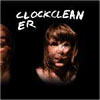 The music industry needs a new genre about as much as it needs another RIAA, but here is one of the self proclaimed torchbearers of "skull music," apparently characterized by garage rock production values and owing as much debt to sludge metal as early 1980s goth rock. So, naturally, it's going to be pretty awesome.
The music industry needs a new genre about as much as it needs another RIAA, but here is one of the self proclaimed torchbearers of "skull music," apparently characterized by garage rock production values and owing as much debt to sludge metal as early 1980s goth rock. So, naturally, it's going to be pretty awesome.
The eight tracks that make up this album can be classified by their length: there are the shorter, more up-tempo tracks, and the slower, more dirgy anthems. The opening "New In Town" is more of the latter: a slow, distorted rhythm not far removed from the early days of Swans with a more post-punk bent, while guitarist/vocalist John Sharkey III simultaneously channels Peter Murphy and Lux Interior with his just slightly over the top, to the point of sarcasm delivery.
The latter comes up even more on the up tempo, shorter songs, with a more punk, less country approach to rockabilly on tracks like "Caliente Queen" and "Daddy Issues," which bounce along somewhat jauntily despite the overall dark, sinister atmosphere of the album. "Vomiting Mirrors" exemplifies this dark feeling, in spite of its bouncy sound and Stooges-style backing, the unpleasant title and lyrics about a "dead doggy on the tracks" keep it firmly grounded in the dark and morose.
The longer, slower tracks focus more on the bass and distortion, capturing the dissonance and, especially in the case of "Human Pigeon," where tribal punk rhythms echo of early Killing Joke (before Jaz went to Iceland and got gothy). These also end up being more anthematic in feel, more spacious arrangements that, I'll probably burst into flames for even mentioning this, have the vestigial traces of early U2 in their vastness.
Above all, Clockcleaner aren't afraid to simply 'rock' without the need of a gimmick or to paint themselves as post-modern ironists. They play loud, sleazy garage rock and occasionally even have guitar solos. They love distortion and making a racket and it is very, very good.
samples:
Read More
- Administrator
- Albums and Singles
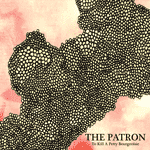 One wouldn't expect a disc with pretty pastel shades on the cover to just be so dark and ominous on the inside, but even the gentle female vocals add to this dense, disturbing haze of an album that is difficult to specifically pin down, but its brilliance makes that unnecessary, and what is left has to be one of the most ominous and captivating records I have heard all year
One wouldn't expect a disc with pretty pastel shades on the cover to just be so dark and ominous on the inside, but even the gentle female vocals add to this dense, disturbing haze of an album that is difficult to specifically pin down, but its brilliance makes that unnecessary, and what is left has to be one of the most ominous and captivating records I have heard all year
Some combinations seem like a natural fit, and others, on the surface, seem completely absurd.As a kid, I remember a kindergarten snack of apples and cheese one morning sounded absolutely atrocious.However, I gave it a try and, well, it was pretty damn good.
Mixing ethereal female vocals with full on digital noise also sounds, superficially, like a bad fit, but it is not. In fact, it works just as well as the aforementioned childhood snack.The ten tracks across this disc do have that strange combination. The gentle, ethereal vocals of Jenha Wilhelm appear alongside the blasting, shredding electronic sounds of Mark McGee like a lone human in a world of machinery gone mad.In some cases, the tracks transition from a gentle introduction into a harsh ending, like the guitar & vocals that open "Lovers & Liars," which segue into a blasting harsh noise burst that can only be described as the unholy paring of Lush and Wolf Eyes.Though structurally the noise elements are more restrained and less junky than the boys from Michigan, the electronics still manage to evoke the same sense of disorientation, dread, and oppression, but in a more subtle manner.
Others focus less on blasting electronics and more on subtle treatments, like the vaguely IDM rhythms that back the noisy (but less aggressively so) "The Man With The Shovel, Is The Man I'm Going To Marry."There are also moments of pure ambience, like the thick, hazy, drumless space that opens "Very Lovely" before the strong rhythm comes in at the end.Probably the most shocking moment comes in "I Box Twenty," with the mostly conventional, non-electronic backing which, with the overt guitars and bass, almost resembles a more rock focused Portishead.
If there were a single word description that would fit this album, it would be 'textural.'In some cases, the electronic textures are almost so thick as to be tactile and tangible:the noises of "Long Arms" are like jagged rocks enshrouded in soft, thick gauze, a haze of buzz and squeal over a low end distorted crunch.The long titled, but short length "Dedicated Secretary, Liaison, Passionate Mother" is a short instrumental of modem connect tones, and a sense of slow drift, like Pangaea separating to the Earth as we know it today.
The Patron is a disorienting album that reveals more and more layers of itself with subsequent listens, and one of the most exciting discs I have had the pleasure to spin recently.
samples:
Read More
- Administrator
- Albums and Singles
 Minneapolis legend Michael Yonkers has been busier than ever lately, releasing two new albums as well as reissuing an essential lost classic from the '70s. On the all-new Carbohydrates Hydrocarbons, he is backed by heavy-hitters The Blind Shake. Having first played together when paired randomly at a club, the experience was so much fun that playing more shows and recording together seemed inevitable. Thank the stars for random occurrences, because this album of pounding anthems and mind-melting guitar frenzy is easily one of Yonkers' best releases yet.
Minneapolis legend Michael Yonkers has been busier than ever lately, releasing two new albums as well as reissuing an essential lost classic from the '70s. On the all-new Carbohydrates Hydrocarbons, he is backed by heavy-hitters The Blind Shake. Having first played together when paired randomly at a club, the experience was so much fun that playing more shows and recording together seemed inevitable. Thank the stars for random occurrences, because this album of pounding anthems and mind-melting guitar frenzy is easily one of Yonkers' best releases yet.
They are a remarkably tight unit, sounding like they have been playing together far longer than the facts would indicate. The Blind Shake seem to know what makes Yonkers tick by the way they augment the strengths of his particular style of songwriting while still remaining distinctly themselves. They accent all the right moments without obfuscating the focus, adding complementary texture and rhythm that serve the songs perfectly. There's no filler on this album, free of both digression and bullshit.
Yonkers is in exquisite form here, his singing and songwriting particularly well-suited for this band. Many of the song titles are half-formed, unanswerable questions such as "Can It Be," "Why Don't," "Don't I Get," or "When Will We," and the anxiety caused by such imponderables fuels the songs' insistent, driving rhythms that pull listeners along like a riptide into deeper waters. Similarly entrancing are the discordant moments like "Don't Even Try" or the bluesy dirge "Here's What I'm." Even brief but fascinating instrumentals such as "Mega Folly" and "This One Again" induce ecstasy through blissful washes of effects and monstrous slabs of distortion.
Yonkers has persevered through periods of obscurity, not to mention some debilitating health issues, only to prove that his idiosyncratic take on psychedelic rock has remained consistently ahead of the curve the whole time. This album, not to mention its more experimental counterpart Circling the Drain, is essential proof that Yonkers is just as relevant and important today as ever.
samples:
Read More
- Administrator
- Albums and Singles
 Balancing between brittle noise and gauzy ambience, this album has a spacious atmosphere that stays even in its most clamorous moments. This lightness makes the album listenable throughout, but it saps the intensity of the music. The electronic arrangements are often engaging, but they dissipate into formlessness too soon to reach catharsis.
Balancing between brittle noise and gauzy ambience, this album has a spacious atmosphere that stays even in its most clamorous moments. This lightness makes the album listenable throughout, but it saps the intensity of the music. The electronic arrangements are often engaging, but they dissipate into formlessness too soon to reach catharsis.
Dour ambience aside, WZT Hearts have a jokey fixation with nerd culture, evident from the candy colored artwork and adolescent titles like "Jeep Uzi" and "Lava Nile." The thin line between laptop musicians and geeks in general has been regurgitated enough not to merit much discussion here, but that influence is felt in the music. "Hearth Carver" uses the neon twitterings of a Commodore 64 as a sound source, and a careful listener will find the call sign for Public Radio International buried in the digital sediment of "Lava Nile."
For such a chaotic album, there is quite a bit of restraint. In more vehement hands, the sputtering sheets of static would roar right in front of the mix, but thick layers of reverb and lower volumes dull the music's sharper edges. Yet the band is most effective when they turn up the intensity. "Spells" lives up to its arcane title, unleashing gusts of warbling electronics and ghostly moans. They crash over each other like the wake of a ghost ship, each wave building on the previous, until the song vanishes abruptly.
More often, the songs fizzle out before than can reach a crescendo. "Hassler" begins with some nimble drum flailing, but it peters out mid song, leaving the attendant clatter to drift without a rhythmic backbone. The closer, "Viszla," is more engaging. A lone shaker hashes out a lazy beat while languid guitar strums and crackling electronics bloom in the foreground.
It is tough to pass judgment on this record. It certainly snaps and pops in the way that a good abstract electronic music should, but there is a lack of muscle behind the layers of noise. In each case, turning up the volume, repeating a phrase, or adding a beat would conduct the energy needed. With a bit more forcefulness, WZT Hearts could make something very compelling.
samples:
Read More
- Administrator
- Albums and Singles
 This double album sees Ruth Rosenthal's poetry set to music by her musical partner, Xavier Klaine. Her words and his music create a delicate whole although moments of black humour and irony break through the elegiac moods. Winter Family deal with weighty issues from the most personal to a haunting passage on the Holocaust. Yet this album is surprisingly easy to listen to, despite the serious nature of the words.
This double album sees Ruth Rosenthal's poetry set to music by her musical partner, Xavier Klaine. Her words and his music create a delicate whole although moments of black humour and irony break through the elegiac moods. Winter Family deal with weighty issues from the most personal to a haunting passage on the Holocaust. Yet this album is surprisingly easy to listen to, despite the serious nature of the words.
While Rosenthal's poetry is more often than not enthralling, there are times when it does seem a little amateurish. This tends to be mostly due to her delivery rather than her words, on "Ray of Light/No Bad Animals" her voice sounds a little off as she tries to instil some drama into the piece. It does not quite work but it is far from a disaster. Elsewhere, her intonation suits the poetry far better. On "Auschwitz" she plays the part of a child trying to comprehend the incomprehensible, "something for grown-ups I guess." Klaine's jaunty piano is a million miles away from the horror of the concentration camp, much like a child's innocence should be.
Klaine's beautiful arrangements are what make this album work so well. I feel that on its own the poetry does not really stand up to scrutiny, it is good but for the most part nothing particularly special (at least when the poems are in English, I cannot comment on the segments in Hebrew). However, with musical backing the poems are stronger, the weaker passages have something to anchor to and the already strong passages become magnificent. Rosenthal's vocals over the harmonium drones of "Psaume" make for a sacred atmosphere; it is exceptionally beautiful.
Although all of the pieces could have easily fit on one disc, the album has been split into two rather short chunks across the two CDs. This is probably just as well as Winter Family's musical poems can be pretty intense. The break between switching over the CDs provides a welcome breather in the middle of the album. I must admit that by the time the album ends I am in no rush to put it back on but this is not due to it being bad or difficult, rather that it is a lot to take in. Overall, Rosenthal and Klaine have created a wonderful document of their work, it is a very natural and human sounding album.
samples:
Read More
- Administrator
- Albums and Singles
 Perhaps I am just not as well versed in my post-punk as I thought I was, or it is a direct result of their short career, but I must admit to have never even hearing of the Young Marble Giants until this box set, but now having heard them, it is safe to say their legacy should be appreciated, and their contributions to music should not be neglected.
Perhaps I am just not as well versed in my post-punk as I thought I was, or it is a direct result of their short career, but I must admit to have never even hearing of the Young Marble Giants until this box set, but now having heard them, it is safe to say their legacy should be appreciated, and their contributions to music should not be neglected.
The post-punk era of the late 1970s and early 1980s expanded the boundaries of punk, and the likes of Wire, Cabaret Voltaire and Public Image Ltd. integrated a great deal of other elements into a more experimental framework. However, while those bands had long careers that continued exploring new styles and routes, Young Marble Giants broke up after the release of just a single full length album, Colossal Youth, and a few singles and compilation appearances. In that regard, this set is like a time capsule, an in-depth study of a band at a particular point in time.
Given that this is for all intents and purposes a compilation of their entire body of work, there is a decent amount of redundancy, with some tracks appearing in album forms, alternate/demo takes, and a single John Peel session. With this in mind, there is a great deal of opportunity to hear tracks taking shape, and how different approaches were taken to the sound.
The three discs that make up this set are structured very logically: disc one is the band's sole full length, Colossal Youth, while the second disc is the Testcard EP, the "Final Day" single, a compilation track from Is The War Over?, and finally the Salad Days compilation of demos and unreleased tracks. The final disc is reserved for an August, 1980 Peel Session that draws on the studio material.
As a whole, YMG worked with a very Spartan palette: guitar, bass, an electric organ, and a chintzy drum machine that could have been stolen from a Bar Mitzvah band. This skeletal instrumentation was used to create tracks that, at their core, were pop songs. Usually driven by the disconnected vocals of Alison Statton, they were simple, yet catchy songs that managed to show the post-punk penchant for dub at times ("Eating Noddemix," "Include Me Out"), while also mixing in elements of rudimentary industrial as well.
Both "N.I.T.A." and "Wind in the Rigging" on the Colossal Youth album are reminiscent of YMG's touring partners Cabaret Voltaire in their drum machine/bass drone and cheap organ leads. However, while the Cabs used that setup on the aggressive Mix Up and purely evil Red Mecca albums, YMG keep things much lighter and buoyant throughout, an entirely different approach. Other tracks are less experimental and more conventional, the shared male/female vocals on "Brand-New-Life" and the Peter Hook-style bass work on "The Man Amplifier" will surely be familiar ground for many listeners.
In spite of their short career, the band were far ahead of their time in some regards: the repetitive kick drum backing of "Clicktalk" meshed with the funk bass lines and scraggly guitar predate the likes of LCD Soundsystem by some 20+ years is but one example. Other nods to contemporaries are interesting to hear as well, the synth and rhythm focused "Have Your Toupee Ready" could resemble the rough demos of Kraftwerk or Suicide (without the confrontational aspects of the latter, of course). The Peel Session disc that closes the collection is by no means revelatory or ground breaking, but shows a more immediate version of the band, possibly due to the use of a BBC producer.
While in some ways a sprawling collection, Colossal Youth & Collected Works is a fascinating document of a band who did quite a bit in their short career, and it isn't common that a band is able to release an entire discography in such a small, affordable package. The booklet included with liner notes penned by Simon Reynolds also provides a complete history of the band that is well worth reading, along with photos, flyers, original cover art, and even the full lyrics. For the price Domino is selling this at, anyone with an interest in the so-called post-punk era would be remiss to not pick this up.
samples:
Read More
- Administrator
- Albums and Singles
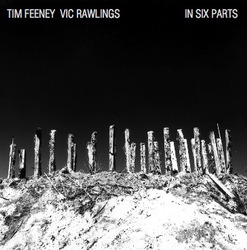 This collaboration between cellist/electronics wizard Rawlings and percussionist/mixer Feeney lays out its agenda immediately on the first part: swelling, high pitched sine waves that pierce and barely relent. However, for the listener willing to endure the harshness, there is a vast array of subtleties to be found.
This collaboration between cellist/electronics wizard Rawlings and percussionist/mixer Feeney lays out its agenda immediately on the first part: swelling, high pitched sine waves that pierce and barely relent. However, for the listener willing to endure the harshness, there is a vast array of subtleties to be found.
In this first track, a subtle click of percussion emerges from the din, which begins to shift in pitch and channel, bouncing from left to right. It is a cruel joke on the part of the artists, because the shifts mimic hearing loss. I caught myself pausing the track and taking off my headphones, just to make sure. The shrill tones become a recurring motif throughout, coming up a bit more moderated in the second part, and yet louder and more piercing in the final piece.
The artists appreciate the lower frequency tones as much as the higher ones, as the second, third and sixth pieces all feature a massive sub-bass rumble that will give woofers a workout. A lot of the other sounds are far less easy to describe however. The wet rattling and cloth ripping sounds towards the latter half of the disc are among the oddest I have heard in recent memory, and though I know a treated cello makes up a sizable portion of this disc, I'll be damned if it is recognizable on too many of the tracks other than the fifth one.
Throughout the entire disc there is an alien, yet organic sense to the tracks that propels the listener towards the final, long piece that combines the previous punishing tones, occasional bursts of noise, and pulses of the previous pieces into a grand finale, with the addition of percussion treated to be a massive industrial roar. Not industrial in the genre sense, but in the cavernous warehouse full of dying machinery sense.
Feeney and Rawlings have made a disc that is purely of the beard stroking academic variety, and I doubt either of them would take offense to it being called such. However, a degree from INA-GRM is not required to appreciate the sheer variety of sounds and subtle textures that are on this album.
samples:
Read More
- Administrator
- Albums and Singles
 Devendra Banhart's fifth album finds him abandoning many of the idiosyncrasies that fueled his earlier work and instead adopting a variety of broader influences. As a result, he reaches neither the ecstatic heights obtained previously nor the jokey lows that plagued Cripple Crow. Apart from a handful of exceptions, Banhart instead settles for something in between for much of this middling effort.
Devendra Banhart's fifth album finds him abandoning many of the idiosyncrasies that fueled his earlier work and instead adopting a variety of broader influences. As a result, he reaches neither the ecstatic heights obtained previously nor the jokey lows that plagued Cripple Crow. Apart from a handful of exceptions, Banhart instead settles for something in between for much of this middling effort.
Banhart is all over the place stylistically on these 16 tracks. Sometimes it works, and other times it sounds like he's trying to impersonate someone rather than just being himself. "Samba Vexillographica" sounds quite a bit like a watered-down tropicalia, and he draws upon the Caribbean for inspiration on the dub "The Other Woman." He sticks closer to home for other influences, like gospel on "Saved," pop funk on "Lover," doo-wop crooning on "Shabop Shalom," and even '60s rock on "Seahorse." That's not to say that he doesn't do any of these things well, but the selection of genres seems more calculated than inspired.
Yet Banhart still shows some flashes of what drew me to him in the first place. The lengthy, three-part "Seahorse" has some great multitracked vocals in its center, and the electric guitar section is uncharacteristically thrilling. "Tonada Yanomaminista" is a decent yelping rock song, not something I've heard Banhart do often. "The Other Woman," the album's reggae track, is actually pretty good, the bass particularly well done and the vocal feedback memorable. Even the three songs winding the album down are pretty enjoyable, especially the brief droning bit on "My Dearest Friend." My favorite track, though, is "Carmencita." It starts quietly and then kicks in after a dramatic pause, sustained by dramatic lyrics and an emotional quality for the most part lacking elsewhere on the album.
Like Cripple Crow, Banhart utilizes a band for most of this recording. His backing musicians are competent if indistinguishable as separate personalities, proving that it's still entirely Banhart's show even if he has expanded his sound beyond his singer-songwriter, acoustic guitar beginnings. Banhart's lyrics in both English and Spanish remain, apart from an awkward forced rhyme or two, one of his biggest strengths even if they may get lost in ordinary songwriting.
If Banhart seeks mainstream acceptance, this album may work in his favor with its blend of familiarity and gentle exoticism. That it is sufficiently relaxing to play at the end of the night and poses little challenge to the listener doesn't hurt. Yet as someone hoping for something a little more unique, I found it to be fairly ordinary but for the few excellent tracks that made it worthwhile.
samples:
Read More
- Administrator
- Albums and Singles
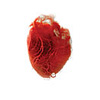 Akron/Family's best material can be found here. Their varied musical proclivities mingle with one another effortlessly; their songwriting is stellar and their performances even better. Their most outstanding record is this one and it's a cycle dedicated to the only mystery on equal footing with death: love.
Akron/Family's best material can be found here. Their varied musical proclivities mingle with one another effortlessly; their songwriting is stellar and their performances even better. Their most outstanding record is this one and it's a cycle dedicated to the only mystery on equal footing with death: love.
The hippies never got it right. They stewed in a cesspool of confused sexuality and proclaimed (free) love the monument of and cure for the woes of human existence. To make matters worse a great deal of uninteresting music was spawned in the interest of spreading this amorous gospel and the whole mess thus became the object of many corporate attempts at recapturing an imagined liberty, attempts to which we are all now subjected in recycled form. Akron/Family scared me the second I saw the title of their newest album, but then I heard it and I felt it and I internalized it and damn it, it feels great.
The group has utilized every available means to sing their ode to this great and mysterious force so I won't bother with the laundry list of instruments, studio trickery, and oddball wizardry employed to bring the whole thing to life. This is an album that seeps into the skin, moves the muscles, animates the bones, and opens up a wellspring deep in the soul all in the name of joyous celebration and near Dionysian frenzy; only the orgiastic quality isn't something you share with three of your buddies and their partners in a feast of the flesh.
It all starts with one of the oldest bits of advice on record: "Love, love, love everyone." Go ahead and let that sink in. In its brightest and truest form that maxim is still radical: love your family, love your neighbors, love your brothers and sisters, love your enemies, love the people that love you, and most importantly love the ones that don't return the favor. It's easy to see it as a simple statement, as a suggestion that means something like, "Help others out, don't do anything bad to them, and maybe take their trash out once in awhile if their old and in need of help." Luckily the band doesn't treat it that way and after the brief introduction of "Love, Love, Love (Everyone)" ends, the band kicks into some super-hyper-stellar-warp-ludicrous-speed overdrive and ascends Diotima's ladder right into the realm of truth, beauty, and the forms. "Ed Is a Portal" is where the album begins to fly. I don't know who Ed is, what he is a portal to, or if it is even proper to give him a gender like I am, but the portal of the title is a transcendent one that eliminates all prejudices and lifts the listener up to some abstract portrait of the universe and all its places as a manifestation of love. It is a circle of hollered rhythms, pulsing drums, buzzing guitar, and ascending chants that performs the function of a guru teaching the student how to eliminate the self. It's a hymn to the world we are all occupying; it is suitably epic and propulsive, spilling over with plenty and covering the room with its unceasing energy.
The album reaches dizzying heights in no more than a few minutes. It seems impossible that the band could follow this song with an entire album worthy of its power. "Don't Be Afraid, You're Already Dead" brings Love Is Simple out of the stratosphere right back to earth with a simple guitar melody and a classic rhythm that gallops along with ease. We have seen the image of beauty and love and now it's back to real life and the mundane. The album proceeds to search out different locations, ideas, and feelings by bringing together just about every musical style the band's covered... and then some. There are moments where all the chanting and singing is covered in a thick dust of noise and intensity, other moments where the music relaxes into a zen-like hum, and still other moments where traditional musical references stand side by side with strange meditative mantras and psychedelic meandering. Instead of narrowing their album into an overly refined concept record, Akron/Family let their imaginations fly and in the process capture a whole host of moments that emphasize all the passion, frenzy, comfort, and knowledge associated with a deep love or friendship.
As the album draws to its end an unusual satisfaction settles into my mind and I find that I'm happier, maybe even rested from the bang and crash that has been the previous hour of music. After all the drama, strange twists and turns, and humorous blitzkriegs, the music turns out to be a blissful therapy. Amongst the strange sounds, unpredictable shifts, and manic tempo bursts there lies a softly beating heart and it is slowly pumping out each lovely sound and each incondensable expression with a steady and reasoned hand. Akron/Family are a careful band that wield chaos like any other instrument, but on this album their song writing and keen ear for tension and progression shines through most obviously. By the end of the album you may or may not believe that love really is simple, but there will be little doubt that it is the force behind this group's music. This is not some lame love, some purely physical expression, it is a deep-seated, fully felt entity holding them and their music together. As a result it pours back out of them with beautiful results.
samples:
Read More
- Administrator
- Albums and Singles
 Better known for his electronic rhythm and bruise work, Mammal's Gary Beauvais moves his project into loner doom blues territory. Not as radical as move as it first reads, Mammal may have changed their palette for a bass and guitar but it is still steadily brooding and unsettled work. The electronic ruts are gone in favor of stringed instrument grooves, his music channelled into a gloomy simplicity.
Better known for his electronic rhythm and bruise work, Mammal's Gary Beauvais moves his project into loner doom blues territory. Not as radical as move as it first reads, Mammal may have changed their palette for a bass and guitar but it is still steadily brooding and unsettled work. The electronic ruts are gone in favor of stringed instrument grooves, his music channelled into a gloomy simplicity.
Recorded during a period of isolation, the record reeks of life strung-out on stress, grime and modern living. "Drifter in the City" is the clearest distillation of his case, a vision filled with fumes and solitude during a sonic youth type lull. Even With only half the tracks featuring lyrics, the theme is solidly represented; the instrumental material is just as, if not more, clear in its intent. The furrowed brow sound of Lonesome Drifter begins in earnest on opener "Repulsion" and its bounced-ball digital beat. The loose strings of the instruments tracing the edges of the notes like a trail of regrets.
"Cyclops" continues to seep feedback, pink scar tissue fingers garrotting notes. There is a mood of doom metal across the album, but without any of its associated clichés. Only seconds into "Fatherlands" visuals of bleak desert horizons are thrown up, in fact the whole album has a heavy (in both senses) visual sense. Mammal's slow and simple riffs crawl along, the spurned frequencies scrambling between the heavy chew of notes.
samples:
Read More
- Administrator
- Albums and Singles
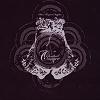 The latest release from Kip Uhlhorn and Simon Wojan's Cloudland Canyon is far too brief which means that each precious moment on this CD is cherished more than ever. The two pieces on this EP are astounding; both are slowly evolving epics with a heavy hint of Krautrock under a very modern sheen. The end result can only be described as cosmic.
The latest release from Kip Uhlhorn and Simon Wojan's Cloudland Canyon is far too brief which means that each precious moment on this CD is cherished more than ever. The two pieces on this EP are astounding; both are slowly evolving epics with a heavy hint of Krautrock under a very modern sheen. The end result can only be described as cosmic.
"Dambala" starts as a heady landscape, all rough edges and dark patches. As it progresses it gives way to a perfect synth rhythm, different loops all going in and out of the mix, locking and unlocking the music. The shifting and pulsating nature of the song makes it feel alive. It is like a giant superorganism: each component of the song being drones (in the insect sense, not the La Monte Young sense) working singularly for the good of the music.
The title track is similarly multifaceted, starting off seamlessly where the sedate "Dambala" leaves off. However, there is a startling change of pace as the drums kick in with a powerful rhythm with a strong bass foundation. The guitar conjures up an ether around this iron backbone. The icing on the cake are the vocals which are in German so I have not a clue what they mean but they sound the business. On "Silver Tongued Sisyphus" there is a thrilling energy that propels the music onward and upward, like a rocket powering up to leave earth and go hurtling through the solar system (and we are all lucky passengers).
Silver Tongued Sisyphus is an absolute stonker of an EP that should be blasted from every available audio speaker. The sound samples below may not give a full impression of the pieces as it is the repetition and shifts in tone and timing that make the music so intense. However, I readily admit that this release has truly whetted my appetite for the duo's next album. With any luck their forthcoming album will pick up where this EP leaves off and Cloudland Canyon can move together beyond the reaches of our galaxy.
samples:
Read More

